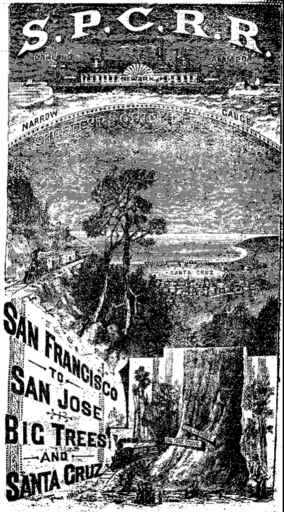 It
was nearly 30 years ago when my parents gave me the first of Bruce MacGregor's
awe inspiring narratives of the South Pacific Coast Railroad as a birthday
present. I was 17, living in the East San Francisco Bay Area and dabbling
in HO and N scale. I belonged to the East Bay Model Engineering Society club
in Emeryville and was interested in local railroads (I'd spent some time in
the Oakland hills looking for the old roadbed of the Sacramento Northern).
I'd never heard of this narrow gauge railroad, the South Pacific Coast. A
couple of rides on the then new Big Trees and Roaring Camp (before their spectacular
spiral trestle was burned down by arsonists) helped my interest in narrow
gauge. The EBMES had two layouts, one in O scale one in HO. Both had narrow
gauge branches.
It
was nearly 30 years ago when my parents gave me the first of Bruce MacGregor's
awe inspiring narratives of the South Pacific Coast Railroad as a birthday
present. I was 17, living in the East San Francisco Bay Area and dabbling
in HO and N scale. I belonged to the East Bay Model Engineering Society club
in Emeryville and was interested in local railroads (I'd spent some time in
the Oakland hills looking for the old roadbed of the Sacramento Northern).
I'd never heard of this narrow gauge railroad, the South Pacific Coast. A
couple of rides on the then new Big Trees and Roaring Camp (before their spectacular
spiral trestle was burned down by arsonists) helped my interest in narrow
gauge. The EBMES had two layouts, one in O scale one in HO. Both had narrow
gauge branches.
After a catastrophic accident in which a trio of brass locomotives
went off a shelf layout and onto the floor I dropped out of the hobby for
a while. Quite a while, over 25 years. Perhaps it was my kids playing with
their wooden Brio trains that reawakened my interest in model railroading.
Nothing much came of it though (besides a switching pike that never got much
beyond the L-girder and roadbed stage). In 1996 I switched jobs, 5 weeks later
I was told "We're moving your group to Oregon. Wanna go?". I said yes and
suddenly I was the owner of a garage large enough to hold both cars and trains!
Now let me say I've got nothing against Colorado narrow gauge.
The scenery is awe inspiring and the equipment is nifty (not to mention which
you can actually buy kits and models for it!). Despite lots of advice that
I was a loony I began to dream the South Pacific Coast dream. As luck would
have it a local book store had a NEW copy of Narrow Gauge Portrait: South
Pacific Coast, Bruce MacGregor's second book about the SPC. A copy of the
3rd of the series also turned up. I was hooked.
But how was I going to fit an On3 empire into my garage (and
still have room for the cars, a wifely requirement!)? A wild, multi-level
design emerged. I think I must be nuts to modeling a railroad with practically
no direct supplies, whose equipment and facilities are almost entirely gone
(or standard gauged), and with such an ambitious track plan. Read on and judge
my madness for yourselves...
Charlie Comstock - April 1998

 It
was nearly 30 years ago when my parents gave me the first of Bruce MacGregor's
awe inspiring narratives of the South Pacific Coast Railroad as a birthday
present. I was 17, living in the East San Francisco Bay Area and dabbling
in HO and N scale. I belonged to the East Bay Model Engineering Society club
in Emeryville and was interested in local railroads (I'd spent some time in
the Oakland hills looking for the old roadbed of the Sacramento Northern).
I'd never heard of this narrow gauge railroad, the South Pacific Coast. A
couple of rides on the then new Big Trees and Roaring Camp (before their spectacular
spiral trestle was burned down by arsonists) helped my interest in narrow
gauge. The EBMES had two layouts, one in O scale one in HO. Both had narrow
gauge branches.
It
was nearly 30 years ago when my parents gave me the first of Bruce MacGregor's
awe inspiring narratives of the South Pacific Coast Railroad as a birthday
present. I was 17, living in the East San Francisco Bay Area and dabbling
in HO and N scale. I belonged to the East Bay Model Engineering Society club
in Emeryville and was interested in local railroads (I'd spent some time in
the Oakland hills looking for the old roadbed of the Sacramento Northern).
I'd never heard of this narrow gauge railroad, the South Pacific Coast. A
couple of rides on the then new Big Trees and Roaring Camp (before their spectacular
spiral trestle was burned down by arsonists) helped my interest in narrow
gauge. The EBMES had two layouts, one in O scale one in HO. Both had narrow
gauge branches.